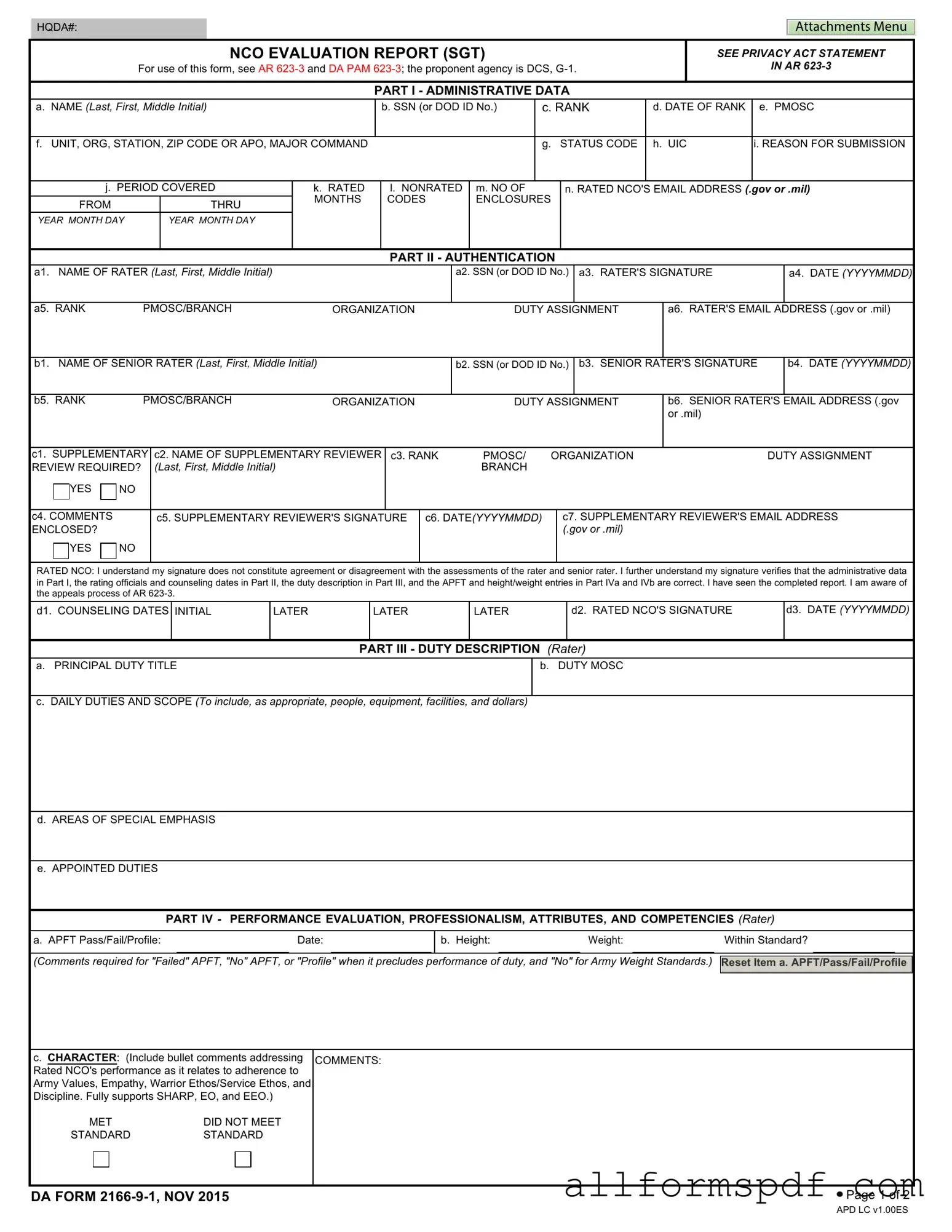Fill Out Your Da 2166 9 1 Form
The DA 2166-9-1 form is an essential document used for evaluating Non-Commissioned Officers (NCOs) in the U.S. Army. This evaluation report provides a structured format for assessing an NCO's performance, professionalism, and potential for future assignments. By detailing various aspects of an NCO's duties and competencies, the form plays a crucial role in personnel management and career development within the military.
Create My Da 2166 9 1 Now
